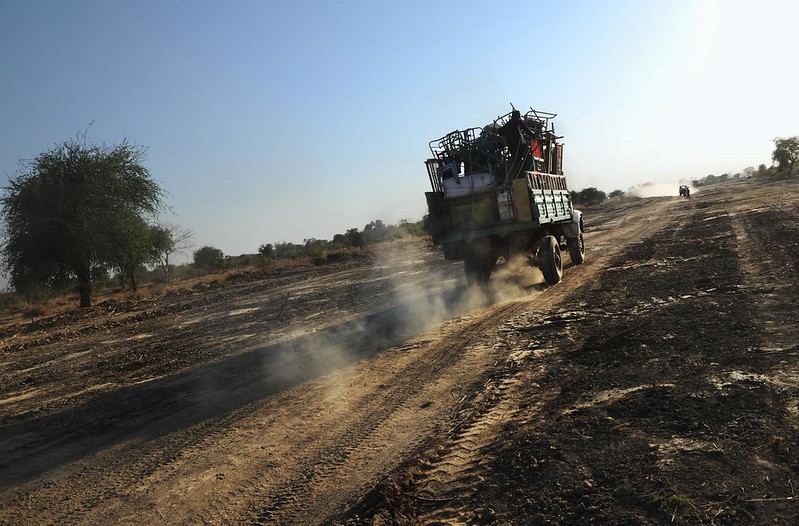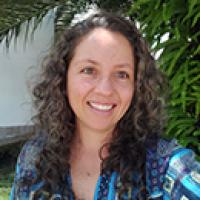Natural and human-induced catastrophic events are pushing humanity to the brink. The compounding and cascading effects of armed conflicts, irreversible climate change, and the global outbreak of COVID-19 are devastating economies and driving more households into poverty. Today, nearly 193 million people are living in a food crisis (2022 Global Report on Food Crises) while 49 million are experiencing alarming levels of hunger (Hunger Hotspots report June 2022). Ending hunger, achieving food security, and improving nutrition are at the heart of SDG 2: Zero Hunger. While ensuring food security for all has been on top of the global development agenda for decades, progress towards the internationally agreed target to end world hunger by 2030 remains off-track. As a consortium partner of the Humanitarian Assistance Evidence Cycle (HAEC) Award funded by the USAID Bureau for Humanitarian Assistance, 3ie is producing an Evidence Gap Map (EGM) to provide an overview of all existing evidence on food security interventions in humanitarian settings.
Rising demand for humanitarian support meets growing need for evidence
As the demand for humanitarian assistance is rising, humanitarian agencies, donors, and charities are responding to this need by pledging more resources for humanitarian support and protection. Estimates show that more than 274 million people will require humanitarian assistance in 2022 and in response, more than USD 30 billion is being mobilized annually to fund emergency support (Global Humanitarian Overview 2022).
With this rising demand for resources has emerged an equally growing concern – how to best use these resources efficiently and effectively? Governments and donors need evidence to better design and implement their humanitarian assistance efforts. Historically, conducting rigorous impact evaluations in an emergency setting has proven to be challenging due to operational, methodological, and ethical issues. To date, there has been no systematic mapping of the available rigorous evidence. However, the number of impact evaluations emerging from humanitarian emergencies is rising, demonstrating the success of continuous efforts to overcome the challenges of evidence production.
Mapping evidence (and gaps)
We aim to identify and collate ongoing and existing impact evaluations and systematic reviews of the effects of interventions in humanitarian settings on food security outcomes. To be included in the map, the evidence must have been generated through a rigorous experimental or quasi-experimental quantitative impact evaluation design or must be a systematic review. Pre-analysis plans and ongoing evaluations will also be included.
How you can help validate our literature search
We have completed a comprehensive search of the literature, including a number of academic databases, along with a large range of grey literature sources. We are keen to supplement the studies we have found by asking relevant policymakers, development programmers, and researchers to share impact evaluations or systematic reviews, especially those which are not published, that may be relevant for our map. In doing so, we can reduce the risk of missing out on relevant evidence and increase the likelihood of creating a comprehensive map.
The EGM protocol provides details on the scope of the map, the types of interventions and outcomes we are covering, and the criteria for study inclusion. Briefly, the EGM will include the following types of interventions implemented in a humanitarian emergency setting:
- Early warning systems
- Interventions pre-arranging household finance for disasters
- Food, cash, and other in-kind transfers
- Agriculture and livestock interventions
- Nutrition interventions
- Market-based recovery interventions
- Water security interventions
If you know of a study that might be relevant to this EGM or have any thoughts/views to share on the subject, please comment below and/or contact Ashiqun Nabi (anabi@3ieimpact.org).
We are accepting study suggestions till 7 September 2022.
Comments
CARE’s Women Respond initiative is inspired by the need to effectively listen to and raise up women’s experiences to adapt and respond to the gender dimensions of the pandemic. The initiative focused on listening to how women and girls in Village Savings & Loan Associations (VSLAs) are responding to the pandemic, what their needs are, and equipping them with data and information to support their own advocacy efforts. This unprecedented listening exercise has surveyed 4,185 VSLA members (3,266 women and girls) in Burundi, Ethiopia, Mali, Niger, Nigeria and Uganda from December 2020 to June 2022.
Our global findings show that the impact of COVID-19 is progressively worsening for everyone, especially around livelihood and food security. However, a comparison between respondents in VSLAs and non-VSLAs shows greater resilience among women in savings groups compared to those who are not in savings groups.
To adequately address women's and communities' needs at large, continuous evidence generation to understand how crises affects livelihood and income is critical, including assessing their resilience and coping mechanisms. Additionally, assessing women's groups, such as VSLAs, during crises is a good entry point to build evidence on progress towards women's economic empowerment by longitudinally tracking their income and savings, and access to social safety nets, credit, digital financial services, markets, and childcare. Such evidence is being used to influence program and policy decisions to effectively deliver responses that address the needs of women to become economically resilient.
https://www.care.org/wp-content/uploads/2022/07/Women-in-VSLA-Respond_F…
Hi Elijah and Vidyha,
Thank you for submitting these papers. I can say we have considered both in our search and your contribution and outreach is greatly appreciated. We were able to include the study identified by Elijah in our map!










Hi Anabi
This paper from Somalia might be of interest to your study.
https://academic.oup.com/jae/advance-article-abstract/doi/10.1093/jae/e…